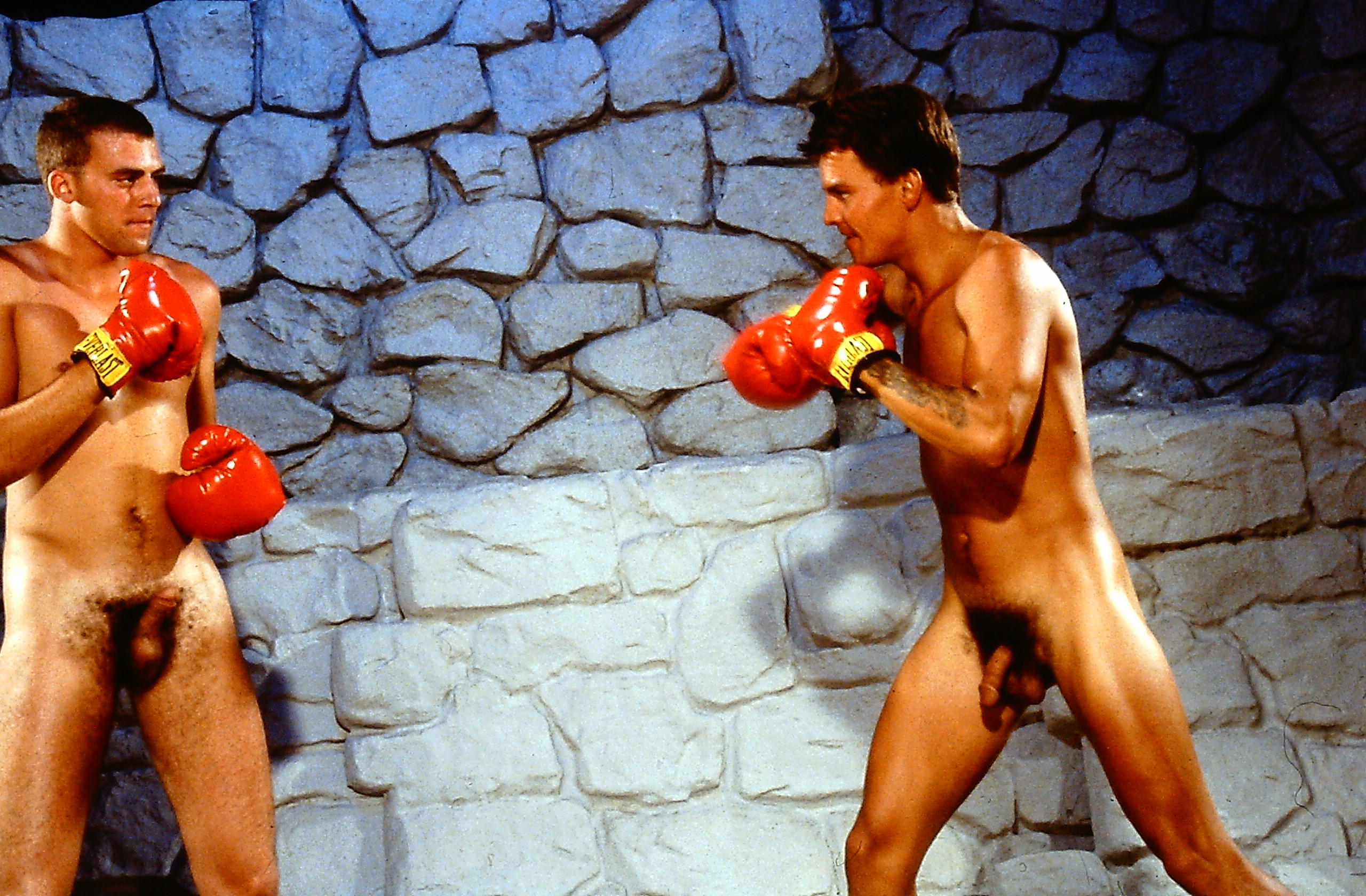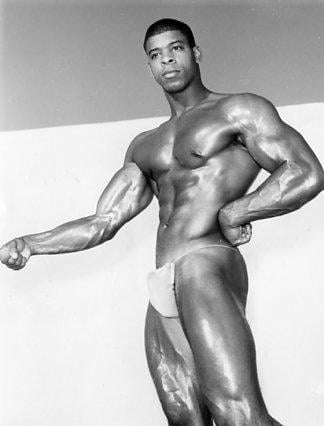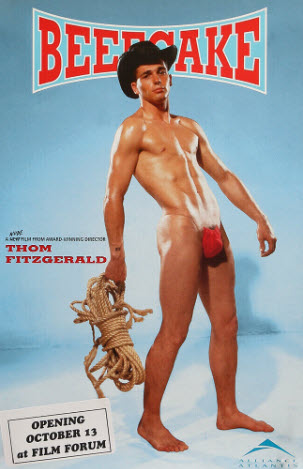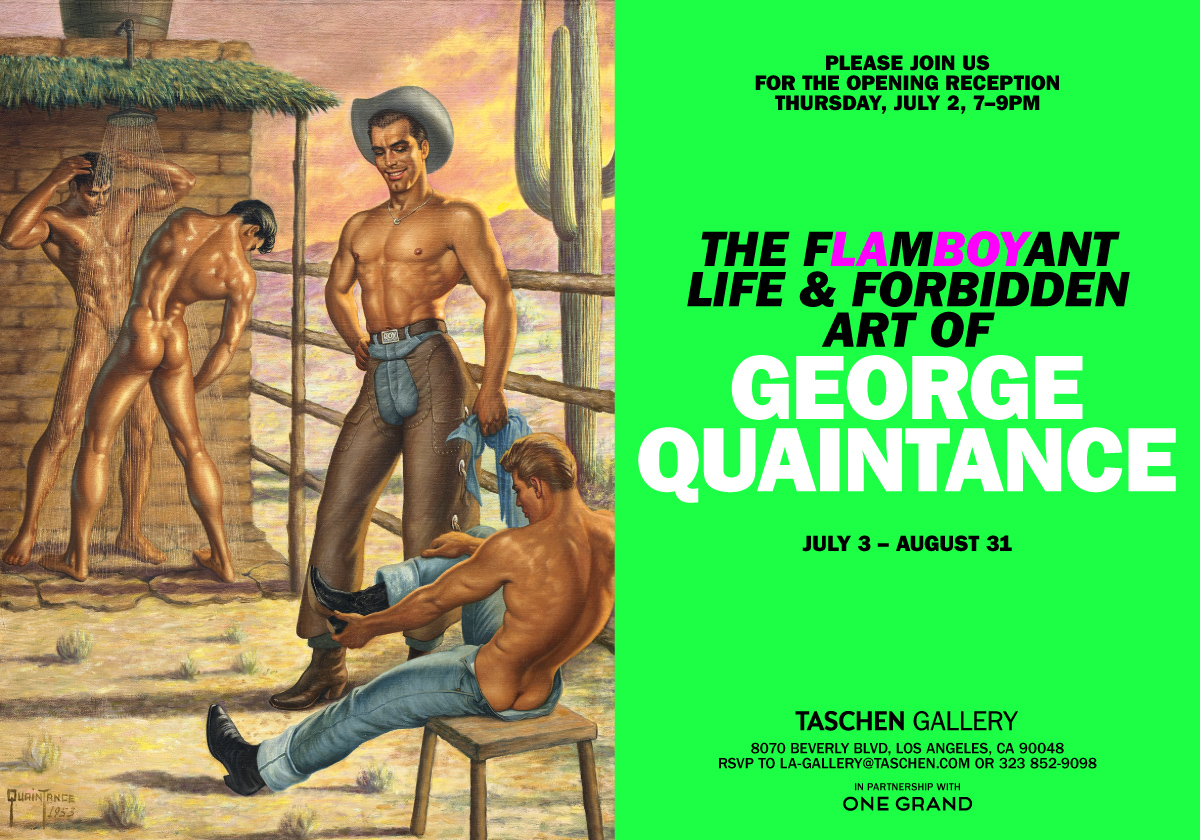Before American Apparel & Dov Charney, There Was Delia Mizer & AMG
Since we’re on a bit of a fashion kick this week, we thought we’d draw attention to some rather fashionable drawers – underwear, that is. When AMG...
5 min read
Bob Mizer Foundation : Feb 2, 2016 4:01:00 PM

Author’s note: This is the second part of a four-part series designed to introduce the novice to photographer and filmmaker Bob Mizer. We will post a new installment to this series on our blog each week for the next month. Part II will explore Mizer’s life from 1951, the year he founded “Physique Pictorial,” to 1968, when the U.S. Supreme Court ruled that nudity in art wasn’t obscene.
The first issues of Bob Mizer’s new beefcake magazine, “Physique Pictorial,” rolled off the presses in 1951, at the height of U.S. Sen. Joseph McCarthy’s anti-Communist witch hunts, when anyone deemed “different” was placed under the microscope and the minutiae of his life examined.
Gays were targeted in a parallel witch hunt known as the “lavender scare,” with Guy George Gabrielson, the chairman of the Republican National Committee referring to such “subversives” as being “perhaps as dangerous as the actual Communists.” Thus, gay men met in secret, in smoky dive bars and in parks, if they were lucky, desperate to connect with others like them. If these meetings were seen as a traitorous act that threatened the American way of life, then Mizer’s “Physique Pictorial” was pure contraband. They were pocket-sized, making concealment simple.
 And within the pages of that contraband were miniature worlds that Mizer created, an escape from the routine and tedium of everyday heterosexual life. Here was a publication that, at least on the surface, touted the benefits of regular exercise and healthy living. Mizer’s men were bodybuilders whose figures looked to be forged from Hephaestus and sent to Earth from Mount Olympus by the greek god of fire and metalworking himself.
And within the pages of that contraband were miniature worlds that Mizer created, an escape from the routine and tedium of everyday heterosexual life. Here was a publication that, at least on the surface, touted the benefits of regular exercise and healthy living. Mizer’s men were bodybuilders whose figures looked to be forged from Hephaestus and sent to Earth from Mount Olympus by the greek god of fire and metalworking himself.
“In the beginning, Mizer’s models came from Muscle Beach, where Bob was well-known as a dedicated artist,” says Dennis Bell, founder and president of the El Cerrito, Calif.-based Bob Mizer Foundation. “Eventually, he found no shortage of young men who were willing to pose for him in his own home. Word spread about Bob’s talent quickly, and ‘Physique Pictorial’ only accelerated his popularity.”
The men were students on the cusp of adulthood; seasoned bodybuilders for whom crafting the perfect body was nothing short of a religion; aspiring actors desperate for exposure; corn-fed boys from flyover states who migrated to L.A. by the allure of possible fame; cherub-faced men with the facial features of an angel and the body of a deity. They lounged poolside, or were photographed among elaborate Grecian statuary, or with Mizer’s mother’s Depression glass casting elaborate shadows on the wall behind them.
Mizer placed these models in poses that only accentuated their beauty – gazing to the heavens, wrestling with their scantily clad contemporaries, literally placed atop pedestals and waiting to be studied and admired. In addition to these images, Mizer frequently presented sketches by artist George Quaintance, who brought cowboys, centurions, slaves, hustlers and wrestlers to life in his sketches.
In these photos, little was left to the imagination – only what could be found between their legs. Mizer made sure that posing straps and fig leaves concealed the models’ genitals – and not because he thought it would simply be tasteful.
“Nudity in art was illegal, and it was illegal to disseminate it,” Bell says frankly. “Other male physique photographers and collectors were jailed for sending and receiving these materials through the U.S. Postal Service, which worked in concert with local police to track down violators. And so, Bob Mizer lived in perpetual fear of incarceration – and with good reason.”
Mizer’s greatest fears were realized in 1954, when he was convicted of the unlawful distribution of obscene material through the U.S. mail. The images in question were a series of photographs of models wearing posing straps.
 Undaunted by his run-ins with the law in both 1947 and 1954, Mizer instead saw the popularity of “Physique Pictorial” grow, the publication itself becoming a springboard for the later fame of models such as Ed Fury, Richard DuBois and Joe Dallesandro, who later would become an art-world superstar thanks to his work with pop artist Andy Warhol.
Undaunted by his run-ins with the law in both 1947 and 1954, Mizer instead saw the popularity of “Physique Pictorial” grow, the publication itself becoming a springboard for the later fame of models such as Ed Fury, Richard DuBois and Joe Dallesandro, who later would become an art-world superstar thanks to his work with pop artist Andy Warhol.
In addition to raising eyebrows and awakening libidos, Mizer also used his publication to share his opinions on a variety of subjects, from social justice to freedom of expression. “Many of us go through life blind to the beauty about us everywhere,” Mizer wrote in the winter 1954-55 issue. “To some, God’s greatest creation -- the human body -- is a thing of shame.”
Mizer also welcomed competitors in the publishing field, the numbers of which rose throughout the 1950s. That healthy competition only meant that more artists were feeling more comfortable in sharing their love of the human body with a growing audience. For Mizer, competition meant progress.
“Our hearts are gladened by the overwhelming body consciousness which is now sweeping our globe, which tends to make all men brothers,” he wrote in spring 1955.
Homosexual activity in art once again came under intense scrutiny with the publication of American poet Allen Ginsburg’s “Howl” in 1955. Copies of the poem, which contained numerous references to drug use and sex, were seized by customs officials being imported from the printer in the United Kingdom in March 1957. Three months later, a bookstore manager was arrested when he sold copies to an undercover police officer in San Francisco. The publisher went to trial that same year and, after hearing testimony both from those who decried the poem as nothing more than smut and those literary scholars who testified on behalf of the poem, the judge ruled that “Howl” had “redeeming social importance.”
Surely, Mizer was at least somewhat aware of the furor surrounding Ginsburg’s poem, and he must have felt some kind of relief and joy when the ruling was handed down. The decision was significant for the literature and art world, and signaled slow progression in the acceptance of experimental art. On the homefront, though the careful eyes of law enforcement remained on him, Mizer also felt some duty to self-censor because of his mother, Delia, a conservative woman who allowed her son to use the household as a studio despite her misgivings about the questionable morality of her son’s work.
Delia died in 1964, leaving a conflicted Mizer to mourn her passing but also ready to embrace a future without the disapproval she so often expressed. For the first time in his life, Mizer felt truly free to be himself.
“Mother’s death created quite a jolt for all of us, though we had all expected it,” Mizer wrote in his journal on Sept. 28, six days after Delia’s death. “The first few days found me going into tears several times, but adjustment came quickly—without question I now have tremendously greater time open. Also on a long-range basis I will not be ‘held down.’”
 That same year, U.S. Supreme Court Justice Potter Stewart famously described his own personal obscenity test when the ruling for Jacobellis v. Ohio. “I shall not today attempt further to define the kinds of material I understand to be embraced within that shorthand description, and perhaps I could never succeed in intelligibly doing so. But I know it when I see it, and the motion picture involved in this case is not that,” Potter said of the film “The Lovers.” Stewart’s “I know it when I see it” expression became one of the most famous in the court’s history.
That same year, U.S. Supreme Court Justice Potter Stewart famously described his own personal obscenity test when the ruling for Jacobellis v. Ohio. “I shall not today attempt further to define the kinds of material I understand to be embraced within that shorthand description, and perhaps I could never succeed in intelligibly doing so. But I know it when I see it, and the motion picture involved in this case is not that,” Potter said of the film “The Lovers.” Stewart’s “I know it when I see it” expression became one of the most famous in the court’s history.
As the 1960s progressed and the world changed -- in sometimes violent ways -- on televisions in America’s living rooms, so too did Mizer’s own business operation. He began producing more short films that brought his macho men to life onscreen. In the years before and after Delia’s death, Mizer’s compound grew -- and so did the number of people living there. Now, Mizer’s models began to become quasi-permanent fixtures in his home, sporting those same impish smiles in his photographs, flexing those same muscles, and wearing those same posing straps.
But all of that would change as the 1960s careened toward a chaotic end. Soon, the fig leaf would drop and a new era of beefcake photography would begin.
Next week -- Part 3 will chronicle Mizer’s career from 1968 until his death in 1992.

Since we’re on a bit of a fashion kick this week, we thought we’d draw attention to some rather fashionable drawers – underwear, that is. When AMG...

There's plenty to enjoy about the very first full-length film about Bob Mizer -- but there's plenty of misinformation to address, too.

Where it was once a reflection of a lively industry, filled with work from a slew of international contributors, Physique Pictorial had become a...

Coming off of the heels of the successful #Rawhide exhibit at Venus Over Manhattan in New York, Bob Mizer's works have now gone up on the walls of...